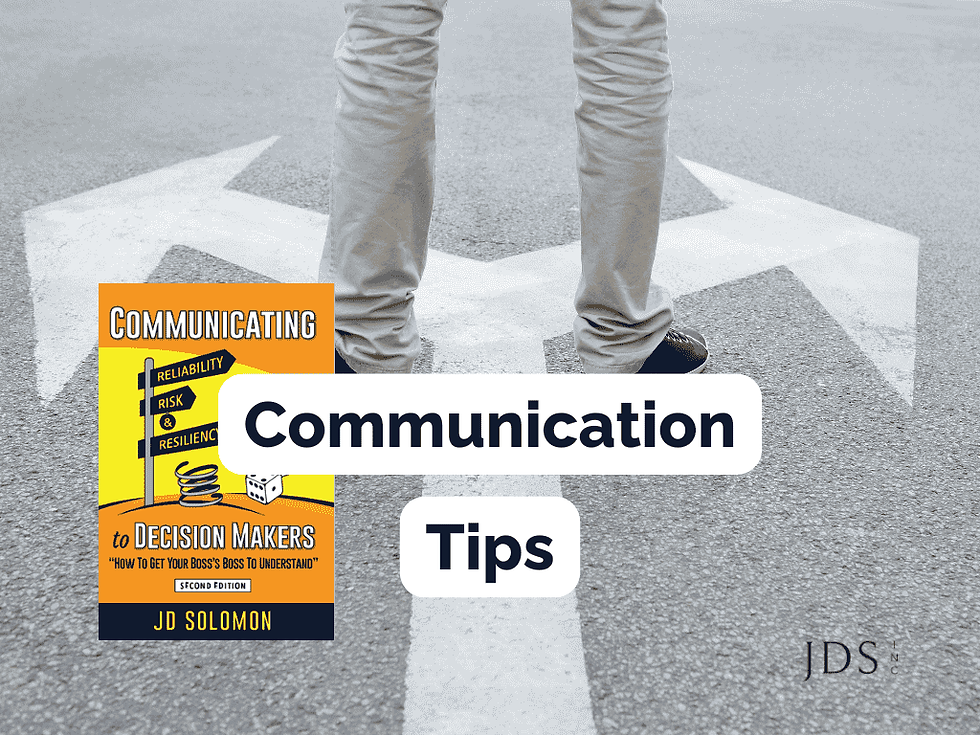Project Risk: Will Hurricane Idalia Loop for a Second East Coast Landfall?
- JD Solomon

- Aug 30, 2023
- 4 min read
Updated: Sep 6, 2023

Hurricanes making a second landfall on the US east coast occur every twenty years. It has been twenty years since the last one. I was reminded in two project meetings yesterday that none of the "reliable" hurricane models predicted a second landfall. Will Hurricane Idalia be the exception? History tells us that we will know before the end of the Labor Day weekend.
The Scenario
Making a second landfall goes something like this. An initial landfall is made, the storm bounces back to sea, reforms, and makes a second landfall as a hurricane or tropical storm.
Hurricane Ivan (2004) is an extreme example of making a first landfall on the Gulf Coast before working its way back into the Atlantic for a second landfall. Hurricane Connie (1954) is another extreme example of making a first landfall and then reforming with another storm at sea to become Hurricane Diane.
Hurricane Ivan (2004) Was the Most Complex
Hurricane Ivan first made landfall on the Gulf Coast of the United States, near Gulf Shores, Alabama, on September 16, 2004. After making landfall on the Gulf Coast, Hurricane Ivan moved northward and eventually transitioned into a remnant low as it moved into the Atlantic Ocean. The remnants of Hurricane Ivan then reorganized over the Atlantic and intensified once again, becoming a strong extratropical cyclone. It made a second landfall on Cape Fear, North Carolina, on September 18, 2004, affecting the East Coast.
Other Hurricanes That Made a Second Landfall
In addition to Hurricane Ivan, four other noteworthy hurricanes have made landfall, reformed, and made a second landfall.
Hurricane Ernesto (2006)
Hurricane Ernesto made its first landfall on the coast of North Carolina on August 31, 2006. Ernesto moved back over the Atlantic and transitioned into a post-tropical cyclone. The storm's remnants then reorganized and regained some tropical characteristics. It made a second landfall along the coast of the Delmarva Peninsula (Delaware, Maryland, and Virginia) on September 1, 2006.
Hurricane Gloria (1985)
Hurricane Gloria made its first landfall on the Outer Banks of North Carolina on September 27, 1985. After crossing North Carolina, Gloria moved over the Atlantic Ocean and transitioned into an extratropical cyclone. The storm's remnants then reorganized and restrengthened. Gloria made a second landfall as an extratropical storm on Long Island, New York, and then moved into New England on September 27-28, 1985.
Hurricane Gloria was not finished. After moving out to sea, the storm transitioned back to a tropical storm and made a third landfall in Nova Scotia, Canada.
Hurricane David (1979)
Hurricane David made its first landfall in the Dominican Republic on August 31, 1979. David emerged into the Atlantic Ocean. The storm reorganized and regained hurricane strength. It made a second landfall near West Palm Beach, Florida, on September 3, 1979.
Hurricane Connie and Diane (1955)
Hurricane Connie made landfall on August 12, 1955, in North Carolina. After the storm’s landfall, it moved along the East Coast and out to sea. The remnants of Connie interacted with another weather system and reformed as Hurricane Diane. Diane made landfall along the coast of North Carolina on August 17, 1955, and then moved up the East Coast, causing significant flooding and damage in several states.
Hurricanes Models Are Helpful but Have Limitations
I was in two project meetings yesterday, and the topic of whether Hurricane Idalia could reform and make a second landfall. The weather-trained emergency response experts in both meetings said no. The experts cited the most reliable hurricane models and mentioned (but dismissed) a few of the “less accurate” models predicting a re-forming and second landfall.
Hurricane models and their related forecasts have become very good over the past few decades. I often highlight these models and the formal after-action evaluations and subsequent improvements as best-in-class for all types of modeling.
However, second landfalls are uncommon. There is limited data in the “most reliable” models for these types of occurrences. Do we have a bling spot? Will we hear in the future of a “rare event” that isn’t really as rare as our models should expect?
Relevance for Project Managers
Hurricane behavior is complex and filled with variability. Storms can sometimes defy traditional expectations and exhibit unexpected movement patterns.
On the other hand, reforming and making second landfalls is not very common.
These are a few observations from the major hurricanes over the last 75 years that have done so.
Three of the five made their first landfalls in late August (before Labor Day).
All made their second landfall within a few days to a week from the first landfall.
These types of storms happen about every twenty years.
It has been twenty years since the last one.
As Yogi Berra is attributed to saying, "It ain't over until it’s over.” Keep your sites battened down. Have a safe Labor Day weekend!
JD Solomon Inc provides solutions for program development, asset management, and facilitation solutions at the nexus of facilities, infrastructure, and the environment. Subscribe for monthly updates related to our firm.










Comments